
‘The thing with Nathaniel Mackey’s “new thing” is that it isn’t, and doesn’t, I don’t think, want to be. Late Arcade (New Directions, February 2017) is the fifth volume in an ongoing, open-ended epistolary fiction collectively called From a Broken Bottle Traces of Perfume Still Emanate. Like the previous installments, it is a series of letters written by a visionary horn player, N., who lives in Los Angeles in the early 1980s, addressed to an Angel of Dust, who answers N. but whose responses we never see. While Mackey’s fiction has always had an eye on the past, the first installment appeared in 1986, five years after the story it depicts took place. We’re now thirty years on and the story has only progressed by four. As a result, the quotidian elements of N.’s letters have only become more radiant, as if Mackey’s interests in music, mysticism, and the recent past have been distilled to their most potent forms.
‘N.’s letters tend to describe his dreams or performances with his jazz sextet, Molimo M’Atet, and they shift between rhapsodic descriptions and theoretical interpretations—the implication, it seems, is that playing music feels like a kind of dreaming, and that dreams adhere to the logic of songs. Sometimes, N.’s letters are preempted by his “cowrie shell attacks,” visionary sequences prompted by shards of glass embedded in N.’s forehead, and sometimes the sextet’s performances are punctuated by the appearance of mysterious “balloons” that reveal the musicians’ subconscious lives and loves. But tonally, these interruptions are more like brushes on the cymbal than sticks. Never jarring, they are only deeper strangenesses in a world already strange.
‘Okay, but, what happens? Well, not much. More than the previous installments, Late Arcade is ambitiously intimate, the cast of characters is stable and streamlined and its narrative is consistently filled with the familiar invaded by other familiars. N. writes when something is worth puzzling over and stops when there is nothing left to say, instead of with a knock on the door. Mackey could not be less interested in the moral crises and cliffhangers that shaped the first epistolary novels. Instead, he has said he was attracted to the form because of its compulsory repetition of salutation and conclusion, which offered an opportunity to translate some of the features of serial poetry. But it would be a mistake to think that the absence of trauma or the predictable topics of discussion mean that the book lacks emotional heft.
‘In Roland Barthes’s Mourning Diary, he writes about how the death of his mother helped him to understand contemporary art: “Struck by the abstract nature of absence; yet it’s so painful, lacerating. Which allows me to understand abstraction somewhat better: it is absence and pain, the pain of absence—perhaps therefore love?” Because Mackey’s fiction mistrusts these moments of succinct clarification, I’m almost embarrassed to put them alongside each other. But Barthes’s words help recast the power of the absence at the center of these books. No matter how precise or sumptuous the prose, Mackey has now written close to one thousand pages of fiction about music that does not exist. This will turn off some readers. What is so revolutionary about it, still, is the way Mackey makes the pain of this absence into the occasion for renewing a love of language, of redirecting our ears toward the page: “I’ve long been intrigued by and attracted to the idea of getting musical information from a picture…”
‘Mackey’s handling of history is subtle and immaculate. Details are never used as gimmick or commentary but as bass notes in a mood of simultaneous deterioration and recombination. N.’s letters prefer specificity to systemic analysis, avoiding Reagan and rising income inequality but excited about new albums and despairing the increasing frequency of oil spills: “It’s as though it were the dinosaurs and mastodons’ revenge, prehistory’s grudge against what came after… against preservation or containment, fossil solidity, an entropic brief against past and present keeping their places.” These details seem to trust that we have always the bigger historical picture in mind. They also offer opportunities for aesthetic response that were missed at the time, a sort of untimely dissent. N.’s description of the “mastodons’ revenge,” of course, becomes the inspiration for a new piece of music performed by the group, “Fossil Flow.” We can’t help but wish that these responses had happened at the time.
‘In part, this is because we receive Mackey’s N. as already doubly belated. He is fascinated by the artists who made Los Angeles an avant-garde hotbed in the early ’60s, but he lives a generation later. His is no longer the city of Ornette Coleman, Eric Dolphy, and the Ferus Gallery. And this distance is compounded by the restaurants and clubs visited by Molimo M’Atet being both real and deceased—the Comeback Inn, Club Lingerie, and Gorky’s form their own geographic “Fossil Flow” to us today. Although the era of “the first truly autobiographical intelligentsia in Los Angeles history,” as Mike Davis referred to Coleman et al in City of Quartz, has passed, Mackey’s attention to a particular subcultural experience is so thoroughly fused with the markers of its description that we might call N.’s letters symbiographical.
‘Late Arcade is a work of gradual understanding, one that is interested in how ideas and experiences can continue to work on us even as we revise our understanding of them—a sort of dolly zoom, but for the everyday life of an artist.’ — David Hobbs, BOMB
____
Further
Nathaniel Mackey @ New Directions
Nathaniel Mackey’s magazine ‘Hambone’
Nathaniel Mackey’s Long Song
Nathaniel Mackey @ Electronic Poetry Center
Nathaniel Mackey @ PennSound
POEMTALK Requiem so sweet we forgot what it lamented
Notes toward understanding Nathaniel Mackey’s ‘Outer Pradesh’
The Song Sung in a Strange Land
Nathaniel Mackey unites modernism, jazz and poets near and far
Nathaniel Mackey: Black breath matters
Song of the Andoumboulou: 142
Comeback City
A Conversation with Nathaniel Mackey
Root Work
A Philosophical Posse Hunts For The Self In Nathaniel Mackey’s Poems
Phrenological Whitman
Buy ‘From a Broken Bottle Traces of Perfume Still Emanate’
____
Extras
A Conversation with Nathaniel Mackey
Nathaniel Mackey Reading
Nathaniel Mackey: On writing workshops
Nathaniel Mackey: Finding a different tempo
_____
Interview
from Callaloo

Christopher Funkhouser: In your work you take improvisation, jazz, and other styles of music and use them as a well-spring. Could you describe how you came to this and manage to keep it such a prominent part of what you do?
Nathaniel Mackey: Probably the earliest aesthetic experiences for me were experiences with music, going back to when I was a kid. Certainly that’s what that comes from and it has continued to be a very important part of my experience. Not that I started off listening to a lot of the music I listen to now. But music has always been a very important part of my life even when I was seven, eight, nine years old. Why I didn’t take up an instrument and become a musician remains a mystery to me but I didn’t and that has to do with circumstantial things which are just circumstantial things. Late in high school I got into reading poetry and fiction on a more serious level, as something other than what you did because it was assigned. I was actually beginning to do it because I was interested in it, because it was speaking to me in a meaningful way. Some of the literature I got into had analogies with music, though I wasn’t always aware of it. Some of the writers who had an early impact on me were also engaged with music. William Carlos Williams was a writer whose work I got interested in when I was in high school. I didn’t know about his interest in music, which wasn’t that strong or that extensive, but later I found out about it, though it wasn’t necessarily that I was hearing music coming through in Williams’s work. Among those writers I was reading early on was Amiri Baraka, whose engagement with music is enormous, tremendous. It was one of the things that galvanized the relationship between writing, reading, and music which began to develop for me.
Funkhouser: Was there anything equally as important as music as an influence?
Mackey: The music was pretty close to and bound up with the religious for me. Some of the earliest music I was exposed to was the music in the Baptist Church, so the relationship between music and the spiritual was very strongly imprinted very early through the church experience. Seeing people respond to music in ways that were quite different from music being listened to in a concert situation, I mean people actually going into states of trance and possession in church, had a tremendous and continuing impact on me. It’s no doubt one of the reasons I so often refer to and incorporate aspects of, say, Haitian vodoun, Cuban santeria and other trance rituals that involve music-dance as a form of worship. That was part of the music experience, the wider context into which the music experience extends. I don’t know what else. Obviously one of the things is that I was interested in a variety of things, even as a kid, so there are a variety of things that were pertinent to my early development. I was a precocious reader, read a lot of different kinds of things and had an interest in mathematics and science early on. I don’t know to what extent that comes in but it does. There was a time when I was reading philosophy, although it’s been a while. I think all of those things play a part. It’s easier to see the role that music plays because it’s so pronounced and it has become a central preoccupation or the trope for a variety of preoccupations that such a work as From A Broken Bottle Traces Of Perfume Still Emanate builds upon. The poems participate in that in their own way, in both the musicality of the writing and the overt referentiality to music in the writing. For me music is so much more than music that when you ask “What else besides music?” it’s hard for me to answer because music includes so much: it’s social, it’s religious, it’s metaphysical, it’s aesthetic, it’s expressive, it’s creative, it’s destructive. It just covers so much. It’s the biggest, most inclusive thing that I could put forth if I were to choose one single thing.
Funkhouser: In the work — the prose and the poetry — there is an extreme lyricism that’s transmitted from somewhere. What lineage do you see your work aligned with?
Mackey: Well, I’ve already named Williams and Baraka. The larger tendencies in American poetry that they are a part of I relate to and relate myself to. Oppen, for example, whose line “bright light of shipwreck” I use as a subtitle to one of the poems in Eroding Witness. Some of the so-called “New American Poetry,” the poets in Donald Allen’s anthology, which I read and was very much impacted upon by in the mid-sixties. The Black Mountain “Projectivist” poets were very important: Charles Olson, Robert Creeley, Robert Duncan. Denise Levertov early on was an important poet for me. I began reading poetry seriously in high school. I graduated from high school in 1965. It was when I went to college that I began to read more, began to read more contemporary, more recent stuff, more post-war poetry. Those were the people I was reading at that time. And, you know, one goes on reading and building on what one has read, and I’ve gone on to other people since then. A couple of Caribbean writers have been very important to me, Wilson Harris and Edward Kamau Brathwaite. Other Caribbean writers as well, like Aimee Cesaire, and other writers, a range of writers.If I start naming them I’ll name all day. There was a period when, for example, the new novelists of France, Alain Robbe-Grillet, Nathalie Sarraute, and others — I read their work quite attentively. I was a big fan of a Polish writer named Witold Gombrowicz. I remember reading and re-reading his novels. You know how it is: you read and you read and you read and some stuff you re-read.
Funkhouser: Did you write at Princeton?
Mackey: Yes. I had written a little bit, had gotten the impulse to write in high school, but hadn’t written a whole lot. It was when I was in college that I started writing more and started thinking about that as something I wanted to do if I could. It was in college that I really began to invest in and investigate the sense of myself as a writer.
Funkhouser: There were teachers there that helped you?
Mackey: Not particularly. It wasn’t so much that setting or any particular teachers there. There were teachers there that I talked to and liked and whose classes were an influence, but not in a direct sense of there being writers there who were teachers of mine. It was more the exposure to literature that I got in literature classes, the exposure to readings that took place on campus, and Princeton being only an hour-and-a-half drive from New York. I would go in and hear readings there, although there wasn’t really a heavy reading scene at that time. Mainly what I did when I went into New York was hear music. That was one of the big stimuli that that allowed. I wasn’t a creative writing major or anything like that — I think I took one creative writing course the whole time I was in college and that was enough. But I wrote and I published in some of the campus literary magazines.
Funkhouser: You manage to place, by virtue of being a publisher and via radio broadcasting, some of your creative output within the context of Western culture, not limiting it to African or Asian or some of the other reference points. Are you striving at all to facilitate any type of social change or awareness, or is it just art?
Mackey: Well, if it can facilitate social change and awareness in a positive and progressive direction, then, certainly, more power to it. I don’t want to overestimate or inflate what work of that sort — doing a radio program, or editing a magazine, or writing poetry and prose — can do. But certainly to the extent that categories and the way things are defined — the boundaries between things, people, areas of experience, areas of endeavor — to the extent that those categories and definitions are rooted in social and political realities, anything one does that challenges them, that transgresses those boundaries and offers new definitions, is to some extent contributing to social change. The kind of cross-cultural mix that a radio program like “Tanganyika Strut” offers diverges from a pre-packaged sense of what appropriate content for a radio program is, where one is usually offered a homogeneous program. There’s a challenge in heterogeneity, whether it’s radio programming, editing a magazine, one’s own work, putting together a syllabus for a class or whatever. These are questions that resonate with all of the political and social urgencies that have to do with how do you get different people to live together in society in some kind of positive and
productive way.
Funkhouser: So where do you find your audience? Are you directing what you are transmitting as poet, as radio programmer, as teacher, to any specific audience or are you just throwing it out there?
Mackey: I’m not just throwing it out there, I’m putting it out there, but I can’t say that I am putting it out there with a particular audience in mind because the way in which audiences are defined is often dependent upon those categories that I mentioned earlier that are fixed and static and I think misrepresent reality in most instances. Therefore I can’t let those senses of possible audiences be what dictates what I do. So I don’t think about the given categories of audience. I think about doing what makes sense to me, what is meaningful to me, with the conviction that there are other people that it will make sense to, be meaningful to, and with the hope that what I’m doing will find its way to them and they’ll find their way to it.That’s the sense of audience I work with. To me it’s more the work finding or defining, proposing an audience, than the work being shaped out of some idea of an audience, consideration of an audience, “this is what such and such a group of people wants to hear…”
Funkhouser: There are writers, especially at this time, who are thinking that way because there’s money in it. That’s not why I was asking you though. Mostly I ask because a lot of the references in your writing are almost completely obscure to someone who is not really on-top-of-it as far as world music goes, as far as “outside” musics go. Someone naively picking up your books might think they were Pound’s Cantos, with so many obscure reference points. For instance, most people would have no idea who Albert Ayler was, and so on. Automatically you might, in a way, sever some understanding.
Mackey: Well, obviously you can say certain things about the audience for a work by looking at the character of the work. In many ways the work itself answers the question “What is the audience for this work?” If you look at a work that is making mention of Albert Ayler, then obviously that work is aimed at people who know who Albert Ayler is or are interested in finding out, would want to find out. You have to talk and write from what you know, about what you know, with what you know. You have to take the risk of speaking to people about things they may be unfamiliar with, just as there are things other people know that you are not familiar with. I have read people whose work spoke of things and made reference to things that I didn’t know about, and reading that work has been an impetus for me to find out about those things. Since that has been my experience as a reader why wouldn’t it be the experience of others? One doesn’t have to be constantly looking over one’s own shoulder asking, “Can I say this? Is the reader still with me?” I think you have to go with the faith that there are readers who are with you. You may not know who or where they are but you have to take that risk.
___
Book
 Nathaniel Mackey From a Broken Bottle Traces of Perfume Still Emanate
Nathaniel Mackey From a Broken Bottle Traces of Perfume Still Emanate
New Directions
‘From a Broken Bottle Traces of Perfume Still Emanate Volumes 1-3 collects the first three installments—Bedouin Hornbook, Djbot Baghostus’s Run and _ATET A.D._—of Nathaniel Mackey’s genre-defying work of fiction. A project that began over thirty years ago, From a Broken Bottle is a lifelong epistolary novel that unfolds through N.’s intimate letters to the mysterious Angel of Dust. Unexpected, profound happenings occur as N. delves into music and art and the goings-on of his transmorphic Los Angeles-based jazz ensemble, in which he is a composer and multi-instrumentalist. The story opens in July 1978 with a dream of haunting Archie Shepp solo, and closes in September 1982 on a glass-bottomed boat borne aloft by the music. This edition also includes a discography, plus an author’s note that offers some reflections on the writings of this extraordinary novel—a realist-mythic layering of lyrical prose unlike anything being written today.’ — New Directions
____
Excerpt
___________________ 6.X1.83
Dear Angel of Dust,
Once again it will have come to nothing. Again we will have sat exchanging thoughts on what was to be. Again we will have heard music, albeit not music so much as music’s trace, music’s rumor, pianistic breakdown as an archetypal he and she gazed out drapeless windows. What stayed with us will have been a wincing, distraught right hand backed by a grumbling left on an abject keyboard, a right undone or done in as much as backed by a disconsolate left. We will have stood and stretched as gray, wintry, late afternoon light filled each window, a wounded look on what lay outside and on our faces as we looked out upon it. An archetypal he and she alone but for the music, aloof to each other even but each the music’s intended, we will have so seen ourselves but no sooner done so than drawn back. Something found in a wrinkle, something found in a fold, it will have been this that set our course and put us on it, collapse and come to nothing though it would.
So I thought, at least, earlier today at Djamilaa’s. What will evanescent splendor have come to I wondered as she stood at a window and at one point leaned against the window frame, her left arm raised, her left hand touching the curtain rod. She stood that way only a moment but the way she stood highlighted her long beauty, lank beauty, her long arms and legs a miracle of limbs. For an instant something jumped out at me and at the same time jumped inside me, a mood or a mix of elation compounded with dread. I saw what so much rays out from and relies upon, however much it shook me with apprehension: lank intangible grace, nonchalant allure, love’s modest body. It was the news of the moment but yesterday’s news as well, something aspect and prepossession seemed intent on saying. What that something was, as Penguin would say, more than met the eye, but it did nonetheless meet the eye. My heart leapt and my stomach dropped.
“Leave it alone,” Djamilaa said, demure as to what was at issue but sensing my mood.
“I wish I could,” I said.
The right hand on the keyboard prompted me perhaps, apprehension of any kind its mandate, apprehension of any kind’s fraught base. Thought’s ricochet played a role as well. Momentary angst was its immediate heir, an ungainliness of thought in whose wincing retreat one felt elation well up and right away subside. Fear of being caught out, knowing no way not to be caught out, factored in as well.
“Things are that way sometimes,” Djamilaa said, laconic, blasé, unperturbed.
“I know,” I said. “Things are always that way.”
It had to do with angles. The piano’s legs buckled for an instant and rebounded, then they buckled and rebounded again. The right side of the keyboard crumpled. The hand that played it crumpled as well. Had they been glass they’d have shattered, besetting one’s ears, by turns bodily and cerebral, with sharp, intersecting planes rolling Duchamps’ descending nude and Picasso’s weeper into one. But they were not glass, however much the keyboard’s keening ping made it seem so.
Dressed in a light cotton shift whose hem touched her ankles, Djamilaa stood caught between bouts and volleys of agitation and arrest, her lank beauty all the more lank finding itself so caught but unavailable all the same, it struck me, not to be lastingly caught. A lack of lasting hold or lasting capture pertained to the music plaguing our heads, mine maybe more than hers but hers as well, a music it seemed we each heard with a distinct incorporeal ear or perhaps together with a shared incorporeal ear.
Djamilaa again offered generic solace, oblique as to what was at issue still, so compellingly we both felt it. “Not always,” she said. “But their effect when they are is to make it seem that way.”
“Yes, I guess so,” I said.
The music itself seemed an oblique telepathic dispatch, however much it appeared woven into textile and skin tone, the music of Djamilaa’s bare arms and bare neck emerging from her cotton shift. It obtained in her skin’s lack of lasting hold and in the wrinkles and folds of her shift. Had she said, “Fret not thyself,” I’d have said, “Amen,” but we were beyond that now, the music insinuating itself, issueless issue, the nothing it let it be known it will have come to, the nothing that had never been. It wanted to keep convergence at bay.
It plied an odd, contrarian wish but it was moving and emotive all the same, anti-intimate while inviting intimacy, anti-contact while acknowledging touch. It plied an aloof tactility, love’s lank tangency, verging on emotional breakdown but brusque, pullaway catch or caress.
It was an actual music we heard and let have its way with us, Paul Bley’s “Touching” on the Mr. Joy album. No way could we say title told all.
As ever,
N.
___________________ 14.X1.83
Dear Angel of Dust,
Yes, that one has “Nothing Ever Was, Anyway” on it, as do several others. It does appear, as you say, we let “Nothing Ever Was, Anyway” infiltrate “Touching,” title not telling all notwithstanding, title not telling all all the more. But there’s an asceticism to Bley’s playing that comes across no matter what the title. Djamilaa’s been thinking about that, wondering about that, drawn to it a lot of late. It’s not that less is more, she likes to say, nor that nothing is all, nor that nothing, as Ra says, is. All those ways of putting it only let sensation in thru the backdoor, she likes to say. No, it’s not about that. It’s not as recuperative as that, not as categorical. It’s an angled attrition, banked extenuation, she likes to say.
It’s as if, when she speaks this way, she’d come to me in a dream and vice versa, each of us the other’s wished-for rescue, each the other’s wariness as well. It’s not unlike what sometimes happens when we play. One becomes the extenuation of oneself and the emanation of something else, someone else, ghost and guest arrivant rolled into one. What is it or who is it steps in at such moments? It could be anything, anyone, one senses, but the hollow one’s evacuation puts in one’s place appears to afford strangeness a friendly disguise. One’s fellow band members pass thru that hollow, step into it, relieving the brunt of an attenuation one might otherwise be unable to bear. It’s something like what Roy Haynes must have meant by saying that playing with Trane was “like a beautiful nightmare.”
Come to as in a dream, yes, a dream dreamt on a rickety bed, springs creaking, home like as not an illusion of home. To speak was to bank one’s breath within angular precincts, wall intersecting wall’s proprioceptive recess one’s being there had become. Stereotactic as well, one touched upon aspect, facet, crater, protuberance, grade finessing grade, tangency’s wont.
As ever,
N.
*
p.s. Hey. ** jay, Hi. I really liked ‘The Holy Mountain’ until they started going up the mountain. I felt like Jodorowsky might’ve run out of money at that point or something. I think I saw an S/M porn that loosely had that reverse ‘120 Days’ scenario, but I don’t remember its name. It wasn’t very good. There are those moment when the non-artistically super complex fills the bill, so I’ll wait for one of those to seek ‘Peep Show’, Intrigued, obviously. Thank you so much for the good, kind words. It’s hard to express gratitude for gratitude, but I’m really feeling it. I hope your today works really well. ** Jack Skelley, Gracias! Oh, the typo’s fun, I don’t mind. Even if it’s wild and wooly, I’m utterly positive that your crazy launch shebang is going to be a total thing. Just pretend it’s a rose parade float and wave from amidst it like a beauty queen. Curious to hear a report, though, you bet. The inevitable if currently mysterious resolution with Fuckhead is what I’m living for. Thanks, bud. Enjoy the countdown to your night of nights as best you can. ** David Ehrenstein, How interesting about Bill and ‘Skidoo’. And the about the Conner cameo. Did you ever end up being an extra in any crazy movies? ** Gabriel Hart, Hi, Gabriel! Welcome! I’m very happy you came inside. I did a fair amount of Laguna acid tripping back in my teens. There was a kind of ‘seen it all’ vibe there that made hallucinating therein very comfortable. Wow, I remember hearing about Brotherhood of Eternal Love. I haven’t heard that moniker in forever. Sure, I would love to have your novel and mag, if you don’t mind. I guess write to me at my email — denniscooper72@outlook.com — and I can give you my coordinates. Thanks a lot! Vag was such a genius. Probably still is. You live in Morongo Valley! I think we shot a couple of scenes there. Crazy. If I had known you back then I would have invited you to the set or hit you up to be an extra in the haunted house scene, alas. Take it easy! ** Uday, Sounds good, the b’day marathon. I really don’t like being the center of attention, so b’days are not exactly my cup of tea. Plus, the older you get, the more they seem like annual bad news. Mm, I would say none of those films have accurate LSD trip portrayals. They’re far too conventional, for one thing. Plus, the whole thing about acid trips is their great length, so a mere scene in a trendy movie isn’t going to nail it. Maybe ‘El Topo’ has the closest incarnation maybe. ** Sypha, I remember preferring Ed Sanders’ ‘The Family’ to ‘Helter Skelter’, but I think it might be very hippie/dated now. Yes, based on your references, I would say it seems like you’ve done an almost total switch to the pop side of things. Which is understandable, mind you. Someone the other day was telling me how great ‘Retro Gamer’ magazine is. And I love old games, so … There’s one store here that might just stock it, but it’s closed for the Olympics. Big day, pal. ** Måns BT, Thank you, Måns! ‘War and War’ is next up. I have to find a way to grab it, or I mean see if I can physically grab it from some venue here in Paris before I go the postal route. I have not seen the entire ‘Sátántango’, just sections. It’s a real hole in my film experience. But rectifiable. Well, you should do Paris first, of course. I love it tremendously. Marseille is interesting. It’s kind of rough, it’s kind of the only dangerous (but actually not) feeling city in France. I think it’s more like interesting areas in France than cities themselves. The Normandy coast is nice. The Pyrenees are interesting and scenic. The old volcanic area is cool. I’ll assemble a list for whenever you make a trip. My weekend wasn’t bad. It did cool down. It felt like being rewarded by the sky. It’s heating back up starting today though. How much longer are you in Spain? ** Steve, With the massive rise of amateur porn, the lines have gotten very blurry. There are iPhone vids of very heavy S/M, gangrapes of drugged people, and so on all over the place. ‘Sleeper porn’ of people having sex with people who have been drugged unconscious is a whole popular genre now. Somehow that stuff just slips through without seeming problems. Cool, Peter De Rome was an interesting porn maker. No, ‘Room Temperature’ is still stuck in its morass. Zac and I are going to figure what we need to do to forge ahead and do it in the next couple of weeks. ** Dev, Hi. LSD has always been my favorite drug, although I had to swear it off ages ago. I get the impression that current day LSD is not remotely as intense as it was back when. Pdfs, okay, of course, I guess. Save the trees and the bank accounts and all of that. A lot of people would say, and do say, that Paris gets off very easy in the summer. We haven’t gotten any hotter than 35 degrees Celsius this year, but the humidity, yeah, would suggest a much higher temperature. But, really, we’re lucky, we are. I cannot wait for the film get finished and out. We’re going to get it born this fall, whatever it takes. I’m very, very happy with it. Thanks! ** nat, Hello with multiple w’s back to you! I know the Final Fantasy games, but have I actually played any of them? Hm, maybe not. Being a Nintendo guy does have its limits. Having my name grounded up by a French accent or even a fake accent is a key to my heart, so, yes, more than okay. Uh oh, ‘The Sluts’ could be a turning point. Watch your … back. ** Lucas, Hey, hey, Lucas! I’m going to read your story really soon, like, really, and I’m sorry for my slowness so far. I’m trying to imagine your face as a weird contraption of pain and tension, and I can’t quite picture it, but what I can picture looks like it would be no fun to be inside for you. May Thursday rush rapidly into the present tense. Except with out the ‘tense’ part. Glad you got to spend quality time with the Horn show. My envy continues. That’s a real fucking deer! And pretty. And one can’t help but wonder what it’s looking at and why. Thank you! No, I haven’t seen ‘Story of Marie and Julien’, actually. Ooh, something to seek out. I will. I’ll figure what the path is between me and it. Thank you for that, pal. How’s your week looking? ** _Black_Acrylic, Hey. A public thank you for the great post! I’m excited! ** ted rees, Hi, Ted! LSD literally made me whoever I am today. It even made Rimbaud seem like cat food. ‘Blue Sunshine’. no. Hm. Luckily, LSD movies seem to have no problem showing up on youtube without their rights holders batting an eye, so I’ll go find it. Great to see you, maestro. I hope you’re far more than surviving the summer and the, you know, politics. xo. ** Bill, I still use the word groovy sometimes, totally by accident. Luckily, I don’t accidentally use the word bitchin’ anymore. Bonello is very hit or miss for me. I really like ‘Nocturama’. I pretty much like ‘Zombi Child’. A few of his early films are quite good. I really didn’t like ‘Saint Laurent’. Another writer I don’t think I know: Nicholas Rombes. I’ll seek and see. Thanks, B. ** Harper, Yep, you said it. Impossible task. Sometimes amusingly badly attempted. I watched a film recently that made me feel like I was on LSD, but it wasn’t portraying drug use, and I can’t remember its title. Yes, when I was, I think, 16, I took LSD continually for a month, and I went basically insane and had a massive breakdown where I could barely talk or think clearly for weeks afterwards. It was amazing, haha. Yeah, the prog stuff that continues to seem exciting was either kind of prog-approximate like Soft Machine or Family or Incredible String Band, or that mixed avant-garde serious music into the prog thing like Henry Cow or others. But the prog-prog stuff mostly just sounds like showoffy tempo and skill set wanking now. ** Darby😸, Hi! Drowsy’s okay. Drowsy can be inventive. Um, I don’t think I have a post on spaghetti westerns, strangely. Coincidentally to this past weekend, I did do an Acid Westerns post, but that’s a whole other thing. Hm, it wasn’t huge, but I saw a fairly big caterpillar once whose rear end looked amazingly like a little human face, and that freaked me the fuck out. Good about your return to your book, and your thoughts thereby get a cheer from me. You told me a little about the book, but what you’re saying now is more detailed and even more exciting to anticipate. Go, Darby! The weather cooled down and was actually really nice, but the heat is rising again today, so I’m trepidatious. ** Justin D, Hi Thanks, J. Yeah, you have to be really prepared before you take LSD. If you’re too afraid of it or are going through something in your life that’s scary or anything, LSD can turn those things into gigantic problems. My weekend was alight, thank you, It was temperate outside, and I saw a couple of friends and bought some books and drank coffee in cafes, kind of standard fare, but it felt good. I’ll hit that Gem Club track in a second because you’re the last visitor today, and I’m almost post-post. Thanks. Good week ahead in theory, I hope? ** Okay. The book that’s spotlit up there is super interesting, and I recommend it, clearly enough. See you tomorrow.
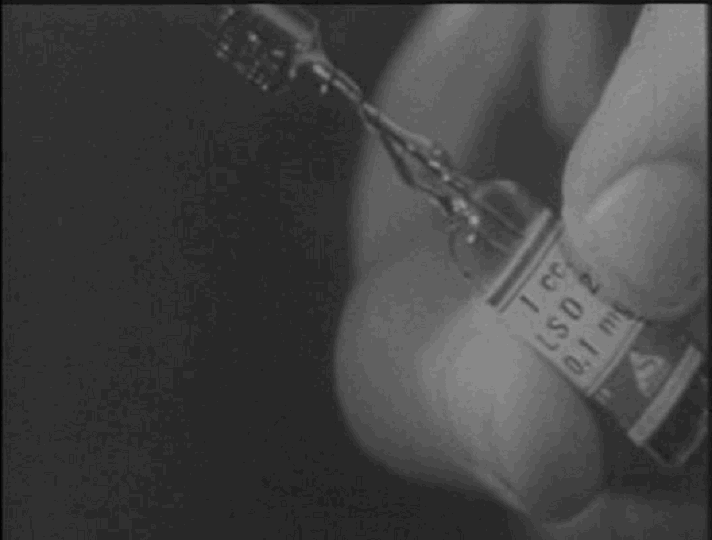
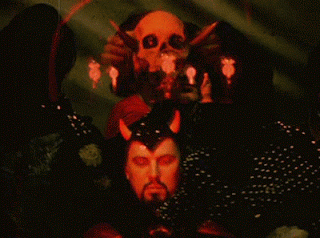
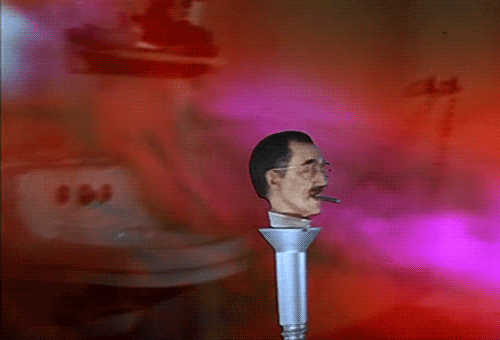
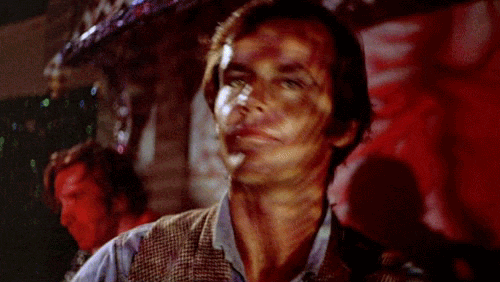
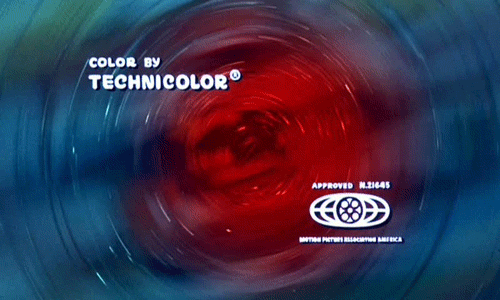
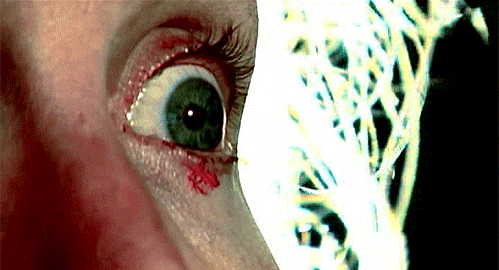
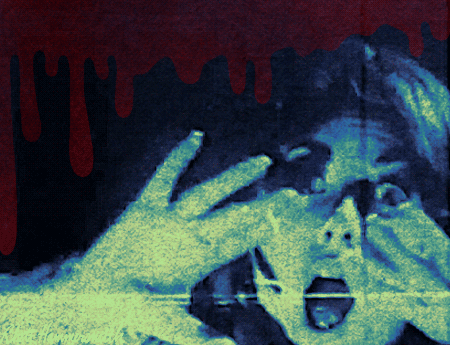
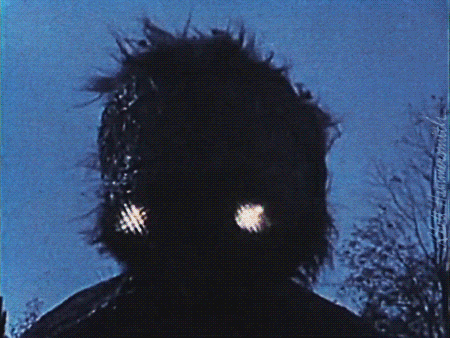
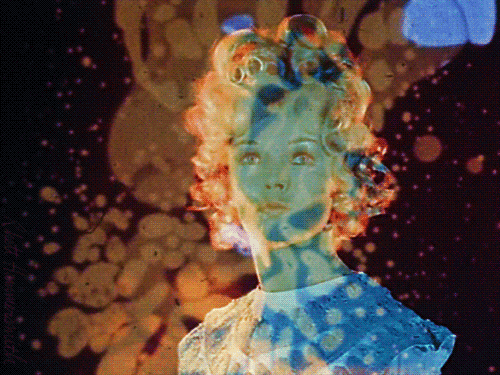
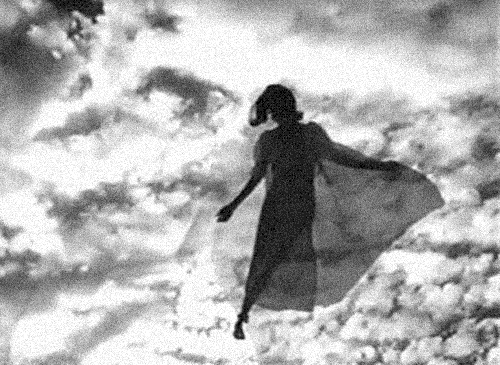
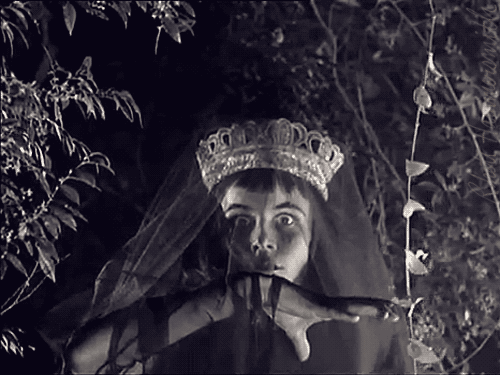
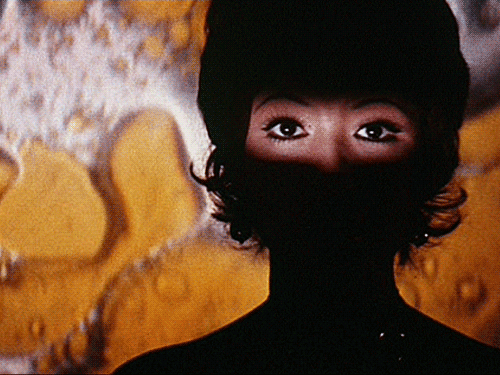

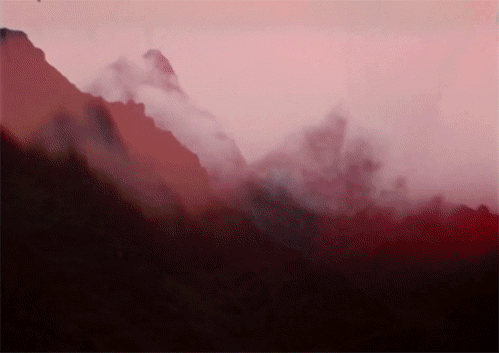

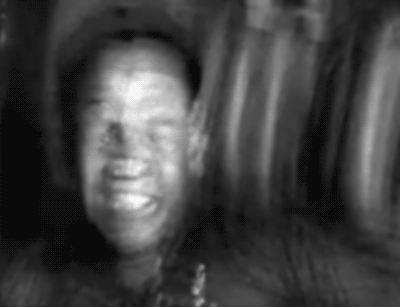
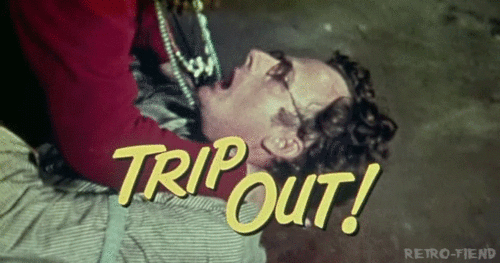

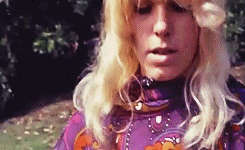

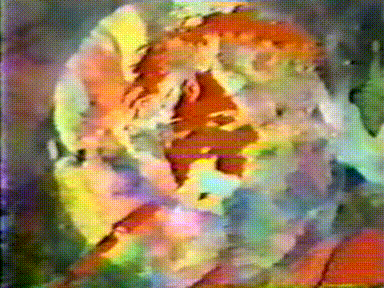
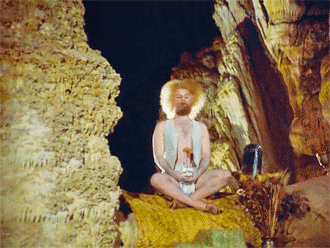


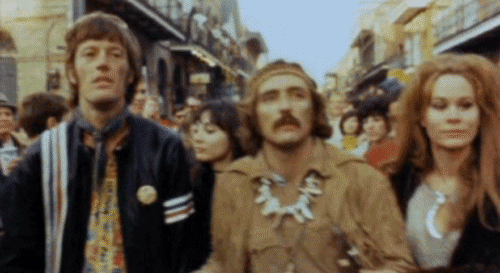

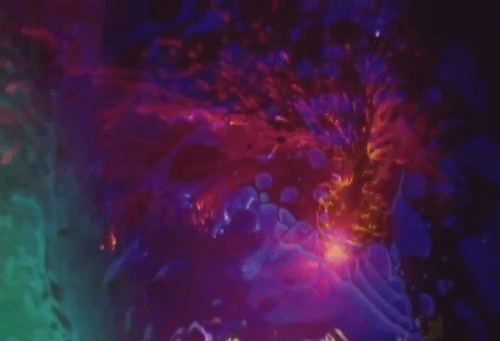

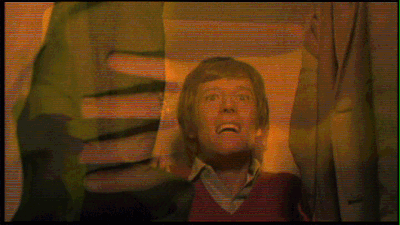
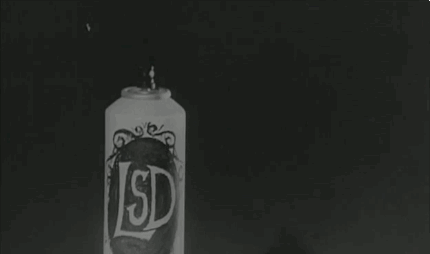


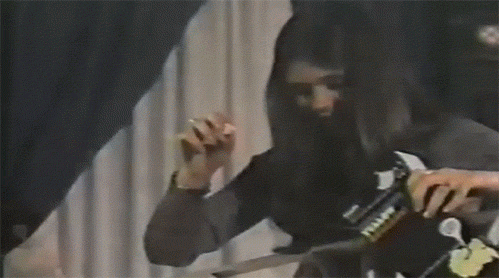



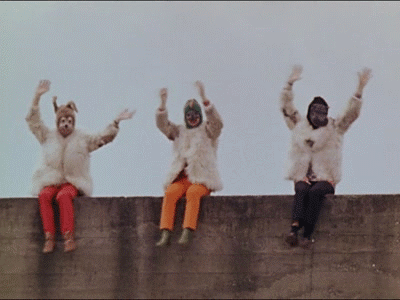


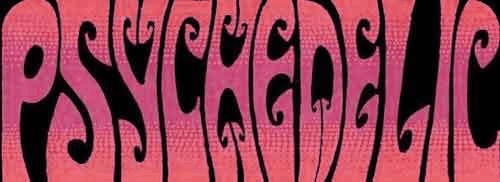



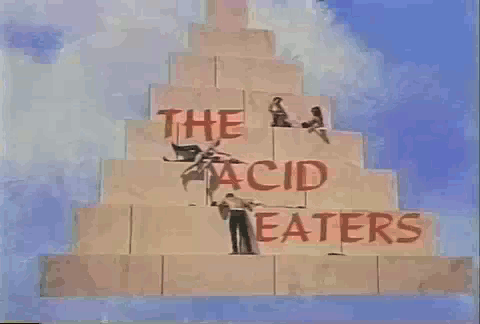
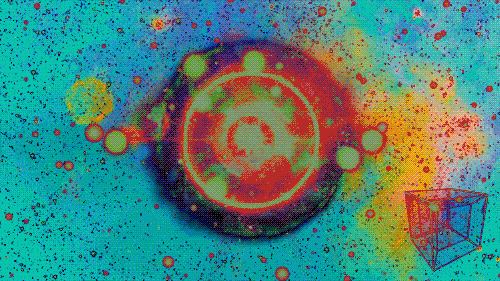
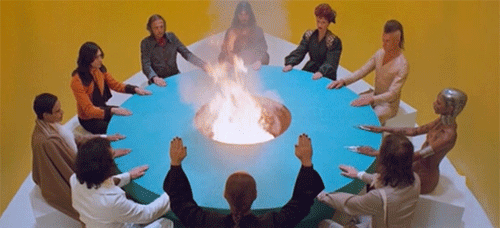
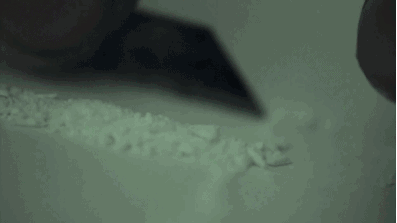



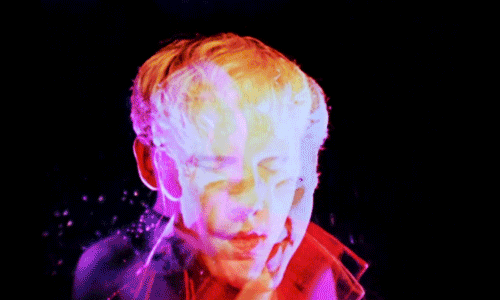
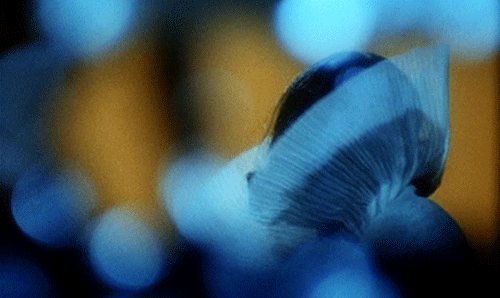


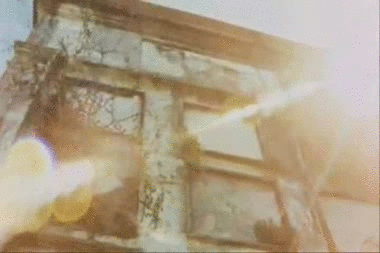
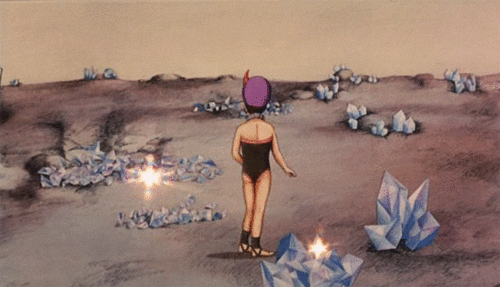

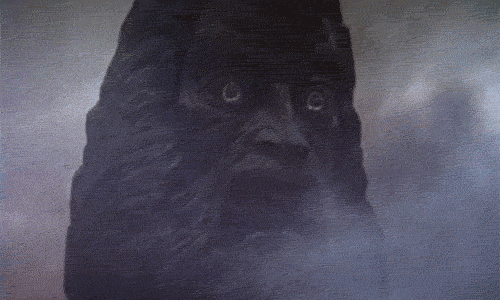








 Now available in North America
Now available in North America 